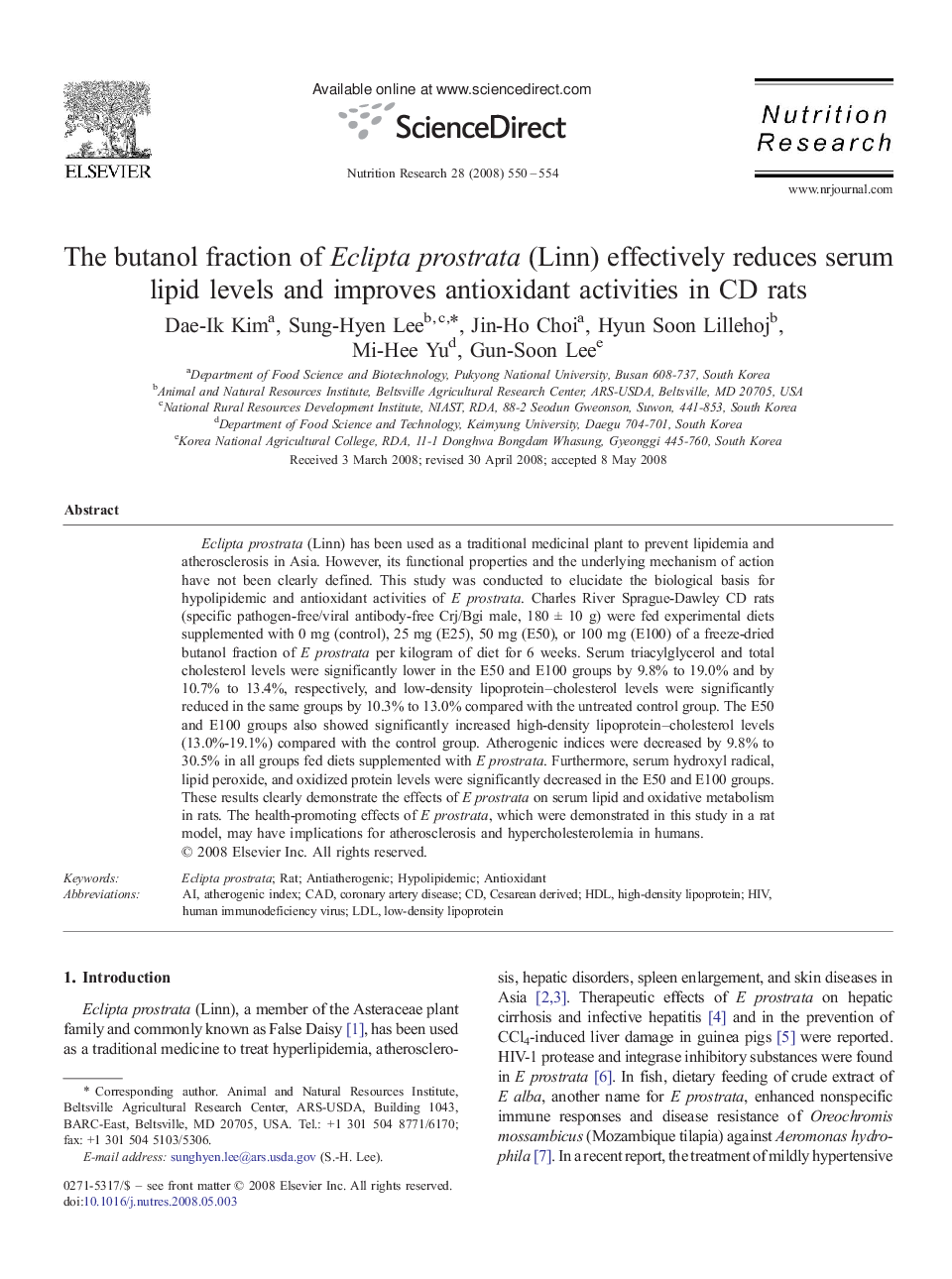| Article ID | Journal | Published Year | Pages | File Type |
|---|---|---|---|---|
| 2809663 | Nutrition Research | 2008 | 5 Pages |
Eclipta prostrata (Linn) has been used as a traditional medicinal plant to prevent lipidemia and atherosclerosis in Asia. However, its functional properties and the underlying mechanism of action have not been clearly defined. This study was conducted to elucidate the biological basis for hypolipidemic and antioxidant activities of E prostrata. Charles River Sprague-Dawley CD rats (specific pathogen-free/viral antibody-free Crj/Bgi male, 180 ± 10 g) were fed experimental diets supplemented with 0 mg (control), 25 mg (E25), 50 mg (E50), or 100 mg (E100) of a freeze-dried butanol fraction of E prostrata per kilogram of diet for 6 weeks. Serum triacylglycerol and total cholesterol levels were significantly lower in the E50 and E100 groups by 9.8% to 19.0% and by 10.7% to 13.4%, respectively, and low-density lipoprotein–cholesterol levels were significantly reduced in the same groups by 10.3% to 13.0% compared with the untreated control group. The E50 and E100 groups also showed significantly increased high-density lipoprotein–cholesterol levels (13.0%-19.1%) compared with the control group. Atherogenic indices were decreased by 9.8% to 30.5% in all groups fed diets supplemented with E prostrata. Furthermore, serum hydroxyl radical, lipid peroxide, and oxidized protein levels were significantly decreased in the E50 and E100 groups. These results clearly demonstrate the effects of E prostrata on serum lipid and oxidative metabolism in rats. The health-promoting effects of E prostrata, which were demonstrated in this study in a rat model, may have implications for atherosclerosis and hypercholesterolemia in humans.
